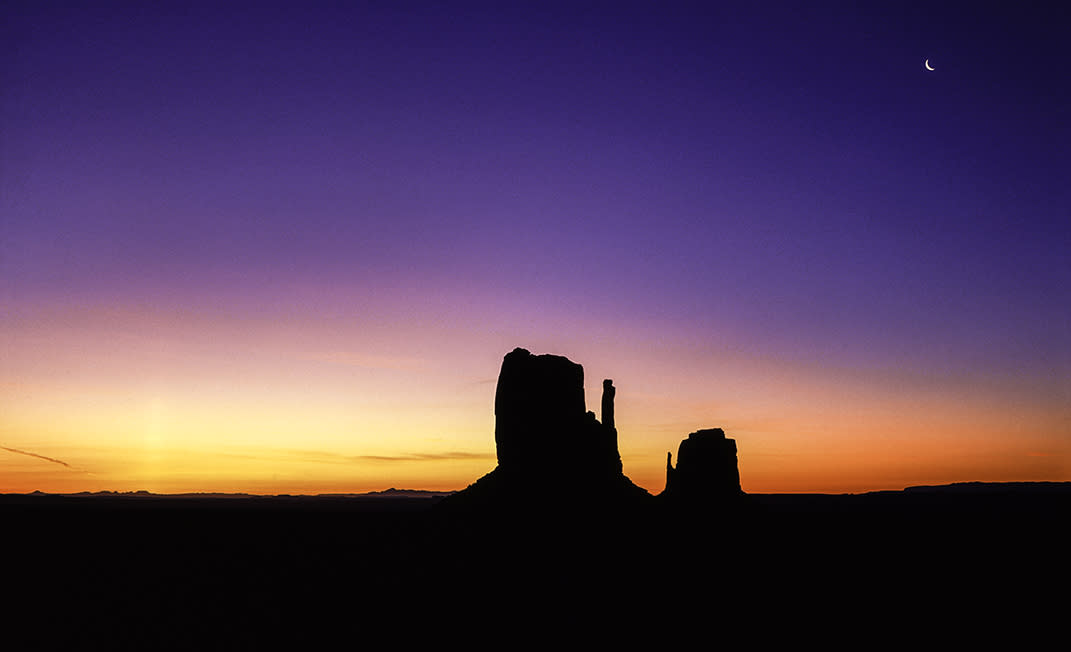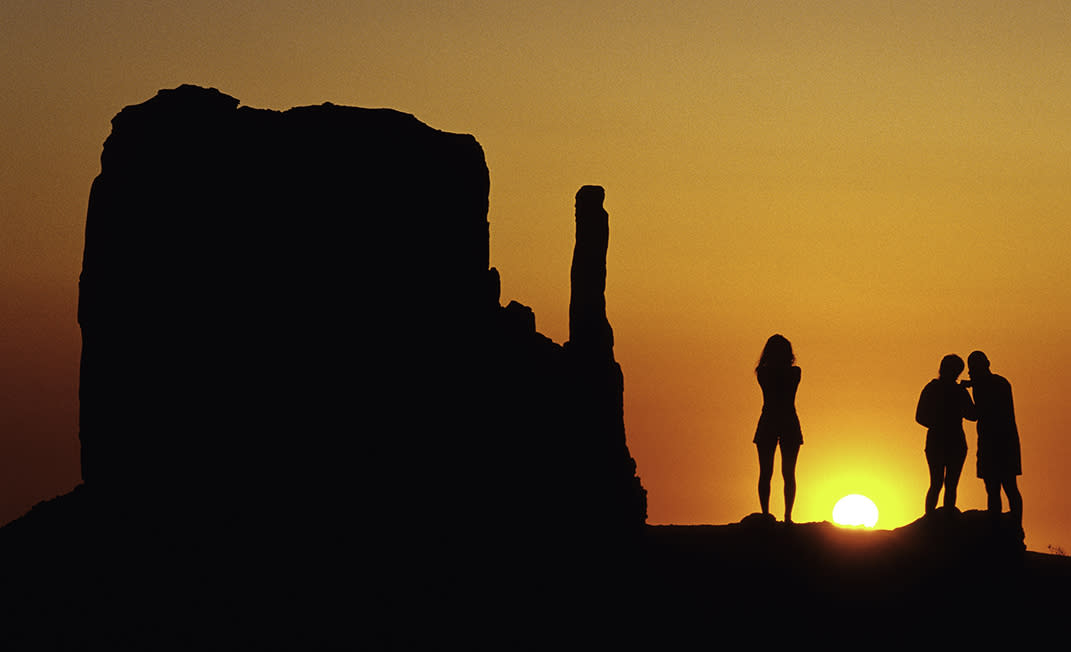In 1938, Harry Goulding, a roughhewn sheepherder and ambitious trader with the Navajo people, made a fortuitous 650-mile journey from an isolated corner of the Colorado Plateau to ritzy Hollywood. He’d heard on the radio that a famous director was searching for a distinctive location for a new movie. Using a collection of stunning large format prints by Josef Muench (an Arizona Highways photographer), he wowed those movie folks and convinced Director John Ford to shoot Stagecoach in Monument Valley. Ford was reportedly so entranced with the area that he gave Goulding a $5,000 check on the spot to feed and house the actors and crew – a stunning gesture of trust during the Depression. What John Ford realized upon seeing those fine prints is what all lovers of landscape photography know – that Monument Valley is the ultimate Western stage set, needing only clouds, storms and brilliant light to bring it to evanescent life.

As a budding photographer, I was drawn to the sky-piercing buttes and great mesas, orange sand dunes and vistas that were at once both epic and intimate. Since 1976, I’ve recorded storm light, starlight, and moonlight over the Mittens (the most iconic buttes in the Valley), while camping in every season. Nowadays you can still camp on the iron stained sand, or sleep in comfort at The View Hotel or in cabins overlooking the famous Mittens. There’s also the option to stay at Harry Goulding’s Lodge, just a few miles away. If you stay at the Lodge, treat yourself to an hour in the Trading Post Museum, a step back in time that’s richly rewarded. (Insider Tip: Goulding’s Stagecoach Restaurant has the best food in the area).
Like John Wayne in The Searchers, the fifth of seven Ford westerns shot in Monument Valley, I’ve always been on a quest, though mine is for light and beauty and natural drama. I’ve found them all in extravagant measure in Monument Valley, the heart of Navajoland. where John Wayne, a young and nearly unknown actor in 1938, was quoted as saying, “So this is where God put the West,” when he first laid eyes on the now iconic sandstone pillars and sweeping mesas.
The one-way drive from Scottsdale to Monument Valley will take about 5 hours, so it's best to stay at least one night, savor a sunset and awake early for the sunrise to backlit the spires of red sandstone. It’s like a live movie set, created anew every day, and I can only imagine John Ford and John Wayne clinking glasses as they watch the sunset sky fade to black over the Mittens, and the stars come out to play.

Scottsdale To Monument Valley Directions
To Get To Monument Valley From Scottsdale:
From Scottsdale, take the Loop 101 to I-17 north to Flagstaff. At Flagstaff, take the I-40 east to the US-89 north. Then take US-160 east towards Kayenta. The last step is to take US-163 north, which will drop you off at the Monument Valley Tribal Park. While the entrance to the park is in Utah, the park is in Arizona.
The drive will take you on 325 scenic miles through ponderosa pine forest, volcanic cinder cones, the Painted Desert and the Hopi Reservation.
To access the Park and the scenic 17-mile self-guided drive, you’ll need to purchase a day permit, which is $8 per person, per day. If you plan to hike or camp, you’ll need to buy an additional back-country permit. To get the full experience, you can purchase a tour operated by members of the Navajo Nation at the Park’s visitor center.
I've spent my life photographing the wild lands of the American West and Pacific Rim and the people who live here. It's been the realization of a dream to make a living showing people exploring and enjoying their environment, and to share their dreams through the looking glass that is photography.





